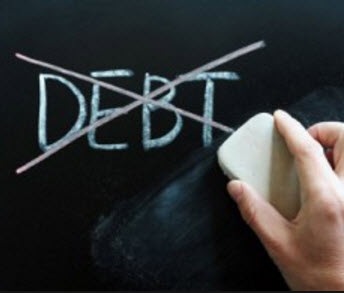There are essentially two types of Centrelink loans available and multiple options within these two…
Debt Waived for Low Income Earners
 A joint initiative has just been launched allowing low income earners who can’t pay their bills, to have their debts waived. Financial counsellors and debt collectors have created the National Hardship Register to help those who are going through difficult financial situations and can’t pay their debts.
A joint initiative has just been launched allowing low income earners who can’t pay their bills, to have their debts waived. Financial counsellors and debt collectors have created the National Hardship Register to help those who are going through difficult financial situations and can’t pay their debts.
The partnership is through the Australian Collectors and Debt Buyers Association Limited (ACDBA). The program was created specifically for those dealing with long-term or severe financial hardship.
Debts that can be waived through the program include unsecured debts such as credit cards, utility bills, phone bills, etc. Secure items such as a vehicle or home are not included.
Eligibility is primarily for those who solely reliant on Centrelink or on a very low income with minimal prospects of getting out of debt based on their current financial situation. Those who qualify must stay in the program for 3 years.
To apply, simply reach out to your local financial counsellor and they will be able to help with your assessment and application. Get more details on the program here.
In addition to the above program which is for serious cases of financial hardship. There are other highly effective ways to get out of debt and back in control of your finances. Below are two proven tactics.
Bill Smoothing – Budgeting is the key to any type of financial success. If you are in debt and don’t have a budget…create one. If you budget and still are in debt, try implementing bill smoothing. It’s a system where you pay a small amount of money towards a bill each pay instead of waiting for the bill to come and paying it in full. This is especially effective for large bills.
Debt Consolidation – This is another way to eliminate debt and it can be done in numerous ways. Some of the more popular tactics include 0% balance transfer for credit cards and debt consolidation loans. The whole idea is to wrap all your debts into one new debt at a lower interest rate. This consolidates all of your debts into one repayment and if it’s a lower interest rate, the repayment amount should be lower than what the repayments were before.
This helps to organise the debt and reduce the monthly repayment. However if you are able to pay more than the new minimum repayment amount, you can reduce the length of the overall debt repayment period immensely along with saving yourself a huge sum of interest payments.
In many circumstances low income earner may not be able to qualify for a debt consolidation loan. If that is your situation, consider other debt elimination tactics such as debt snowballing. Also, consider non-bank loans for borrowing money to help with debt. Non-profit organisations also provide different types of small loans that may assist.



Please email me imfo
Hi Tracie,
For more information visit https://www.nhr.org.au/index.php or apply through a financial counsellor.